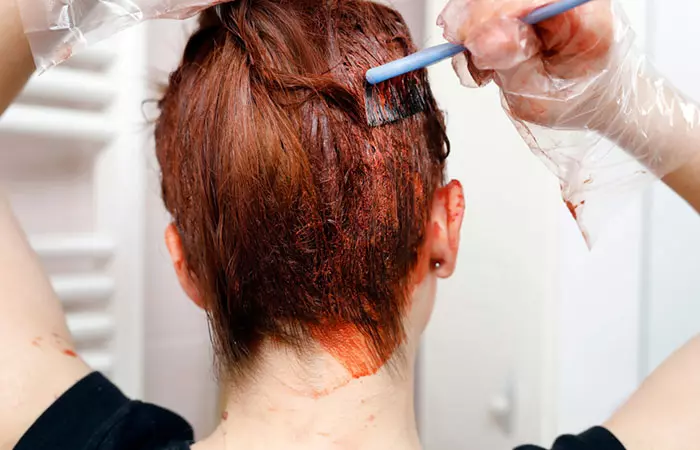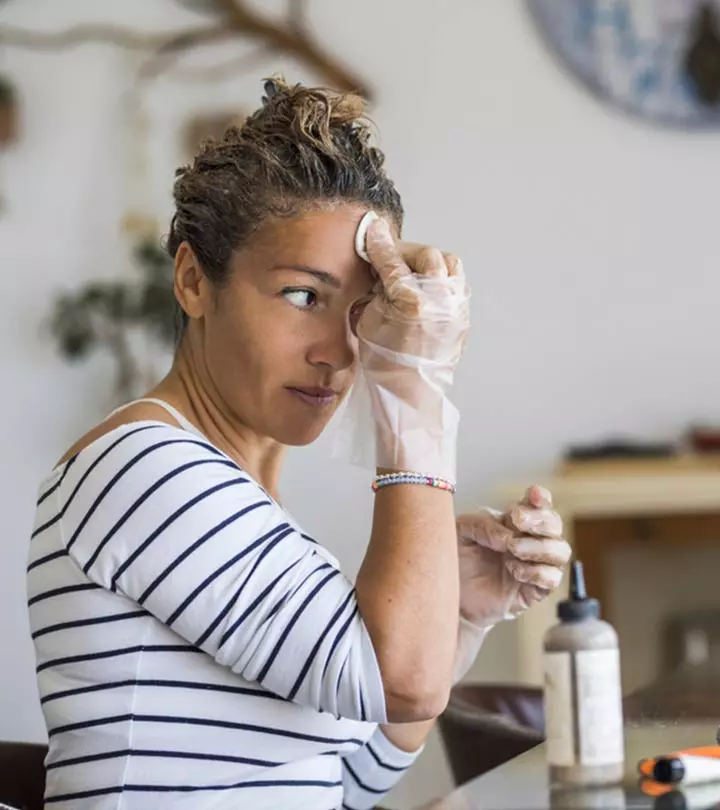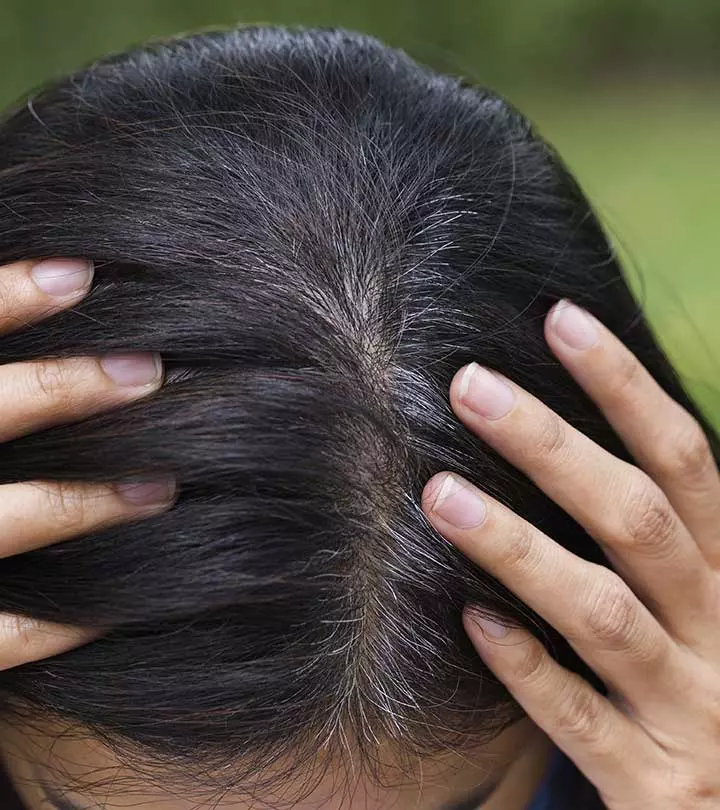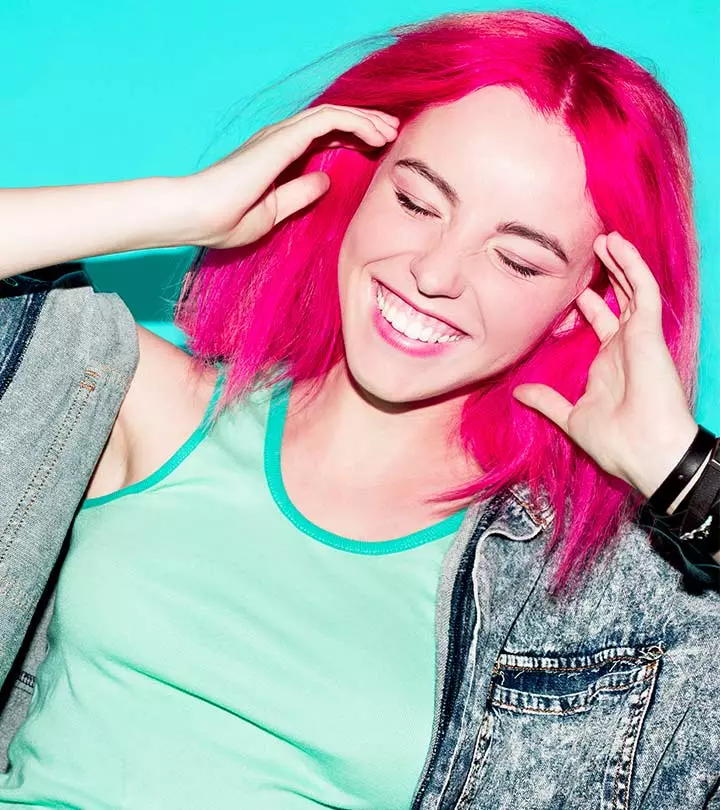Vegetal Hair Dye – What Is It And Why Should You Use It?
Hide your grays and look younger without worrying about chemicals and expensive dyes.

Image: Istock
Vegetal hair dye – the name may sound a bit strange, but this is the best type of hair dye you can opt for! If you are in your 20s and already seeing gray hair, we know the struggle is real. Premature graying of hair can be caused by a variety of factors, one of which is heredity. Whatever the reason, the moment you detect those gray strands, your entire world is turned upside down!
Dying is the most straightforward way to conceal gray hair. You can color your hair without worrying about negative effects by using a variety of permanent, semi-permanent, and vegetal hair dyes. In recent years, vegetal hair colors have surpassed most other dyes in popularity. Natural products, such as vegetal hair dyes, are often less expensive and gentler on the hair. In addition, they come in a variety of colors and have no negative side effects. In this article, we will discuss everything about vegetal hair dye and how to choose one for your hair. Keep scrolling!
 Trivia
TriviaIn This Article
Types of Hair Dyes
There are different categories of hair dyes available in the market today. Be it permanent hair dyes, semi permanent or temporary hair dyes – all of them help your crowning glory look young!
- Permanent Hair Dyes

When we say permanent, we don’t really mean that they will last your lifetime! It just means that by using a permanent hair dye, your hair will remain colored for more than 6 months. As the hair grows, it will also grow out of its dye color. For a permanent hair dye you will have to visit the salon to get that professional touch. Permanent hair colors usually have a lot of chemicals that can even harm the skin on your scalp. If you have sensitive skin and hair, then you will be all the more prone to hair damage. The advantage of using permanent hair color is that they are long lasting but at the cost of your scalp health! Be ready for itching, burning and myriad other side effects of hair dyeing that come with these permanent hair solutions.
- Semi-Permanent Hair Dyes
Semi permanent hair dyes give the same results as permanent hair dyes but are short lived.
You will need to dye your hair again within 3 to 6 weeks of using them. The longevity of the color also depends on how frequently you wash your hair. The semi permanent hair dyes mostly use natural products to impart color to the hair. An added benefit is that they nourish your hair while coloring it. But the downside is that you may need to color your hair frequently. Why opt for semi permanent dyes? They have no side effects; but be ready to make frequent trips to the salon!
While it is but natural to grow old, you need not sport a salt-and-pepper hairdo, just because you are wary of chemical dyes. Your apprehensions are valid, as chemicals do more damage than good. So what’s next? Use temporary hair dyes!
- Vegetal Hair Dyes

We have saved the best for the last! Temporary hair dyes. Yes, they are in vogue today and for good reason. They are mostly made of organic vegetable extracts and are chemical-free and extremely safe to use.
Temporary hair dyes do not last very long on your hair, but can be used for touch ups as and when you wish, without fearing allergies. Vegetal hair dyes are a fine example of this type of hair dyes. You can use them as frequently as you want on your hair without having to bother about side effects. The hair dye is purely made out of natural extracts. However the color wears off within a week or two. If you are diligent about conditioning and maintaining your hair regularly then this is the right product for you. An added advantage is that you can condition and treat your hair as you please, without having to worry about the color running or fading. Use vegetal dyes regularly to keep that shine and bounce in your hair.
Key Takeaways
- Vegetal hair dyes are temporary hair dyes made from vegetable extracts.
- Being natural, vegetal hair dyes do not irritate your skin, scalp, or hair.
- Vegetal hair dyes offer many color options – blonde, violet, crimson, plum, and orange.
- Vegetal hair dyes nourish and moisturize your scalp by getting rid of dandruff, and make your hair soft and bouncy by strengthening hair follicles.
- Vegetal hair dyes fade within a week or two.
What Is A Vegetal Hair Dye?

The name says it all! Vegetal hair dyes are one of the best herbal dye alternatives made out of vegetable extracts. Several vegetables that we consume on an everyday basis are rich in color. Vegetal hair dye ingredients are all the extracts available from these vegetables. There are several benefits of using a vegetal hair dye. For example, they nourish your scalp while coloring them. They keep the skin on the scalp moist and also rid you of dandruff and dry skin. They are better absorbed by the hair follicles and also strengthen them while coloring them. Hair remains soft and bouncy when you use vegetal hair dyes.
Why Go Vegetal?

Vegetal dyes are the latest fad, and popular among both youngsters who want a fancy color, and the elderly who just want to cover their grays! They are cheap, available in both vibrant and traditional colors and most importantly, do not irritate the skin, scalp, or hair. These dyes are PPD-free, which means they’re unlikely to cause allergic reactions in people who are sensitive to paraphenylenediamine (PPD). They are also great for users who are worried about the long-term damage or hair loss associated with the hair dyeing process as these dyes are made of plant-based ingredients. This kind of dye is also environment-friendly and a sustainable alternative to traditional hair dyes. You can master the technique of this type of color application at home, and sport a hairdo you always wanted to try!
Vegetal Hair Dye Color Options

If you thought vegetal hair dyes come in boring blacks and browns, you are in for a pleasant surprise! Vegetal hair dyes come in a number of exciting color options. In fact you will be spoilt for choice when you see the shades on the offering.
- Light blonde
- Mahogany blonde
- Violet
- Plum
- Crimson
- Henna red
- Copper blonde
- Deep orange
These are just a few of the many colors that you can choose from, when you shift to the eco-vegetal hair dyes. Now, is that not a tempting proposition?
 Quick Tip
Quick TipWhich Brand To Choose?
While we are not here to promote any brand, we strongly suggest you try Vegetal Bio Color, a brand that has gone viral in the Indian market. From red to black, this brand has a number of colors to pick from, and is just the colorant for those of you who have sensitive skin and scalp. Your damaged tresses will regain their sheen and luster in barely one application!
Infographic: Popular Hair Color Choices With Vegetal Dyes
Vegetal dyes are colorants derived from various plant parts. These dyes are completely organic and have little to no negative effects. They are also much gentler on your hair and scalp than chemical hair dyes. While vegetal dyes come in various hair colors, we have covered the most popular ones in the infographic below. Check it out to know more!

Illustration: StyleCraze Design Team
Vegetal hair dye is made of non-toxic vegetable extracts and does not contain any harmful substances. It is an ammonia-free temporary dye with no side effects. Its effects last for a week or two. Besides coloring your hair, these dyes help nourish the scalp and keep it moisturized to prevent dandruff. The hair follicles also absorb vegetal dyes better and attain more strength due to the nutrients in these dyes. These dyes are inexpensive and come in different colors, ranging from light blonde to deep orange. So, pick a vegetal dye and say ‘goodbye’ to your gray hair for at least a few days!
Frequently Asked Questions
Is vegan hair dye PPD-free?
Yes, vegan hair dyes are generally PPD (para-phenylenediaminei A chemical compound mainly used as an ingredient in hair dyes and sometimes as a replacement for henna. ) free as they are not permanent hair colors. However, it is best to confirm it by checking the ingredient list on the dye.
Can I expect vegetal bio color results as fast as chemical hair color?
Vegetal Bio Color takes time for color development as compared to chemical hair colors. You may need to wait for up to 48 hours or 2 to 3 applications to get the same results as chemical colors, as they use natural plant-based ingredients that color your hair naturally.
Can vegetal hair dye lighten hair?
No, vegetal hair dye does not lighten hair as it contains no ammonia.
Does vegetal hair dye work on all hair types?
Yes. Vegetal hair dye works on all hair types and leads to no harmful impact. However, you can conduct a patch test to check if you are allergic to any of the natural ingredients.
Can I use vegetal hair dye if I have chemically treated hair?
Yes, you can, but there’s a catch. It is recommended to wait for up to 2 weeks before you use vegetal hair dye on chemically treated hair. For keratin-treated hair, it is recommended to not use vegetal hair dye for up to 6 months. It is best to consult an expert for personalized recommendations.
Illustration: Vegetal Hair Dye - What Is It And Why To Use It?

Image: Stable Diffusion/StyleCraze Design Team
Learn how to apply bio color for beautiful, natural-looking hair color. The following video contains step-by-step instructions to get the perfect look!
Read full bio of Madison Dufour
Read full bio of Jyotsana Rao
Read full bio of Shatabdi Bhattacharya
Read full bio of Anu Pallavi

























Community Experiences
Join the conversation and become a part of our empowering community! Share your stories, experiences, and insights to connect with other beauty, lifestyle, and health enthusiasts.